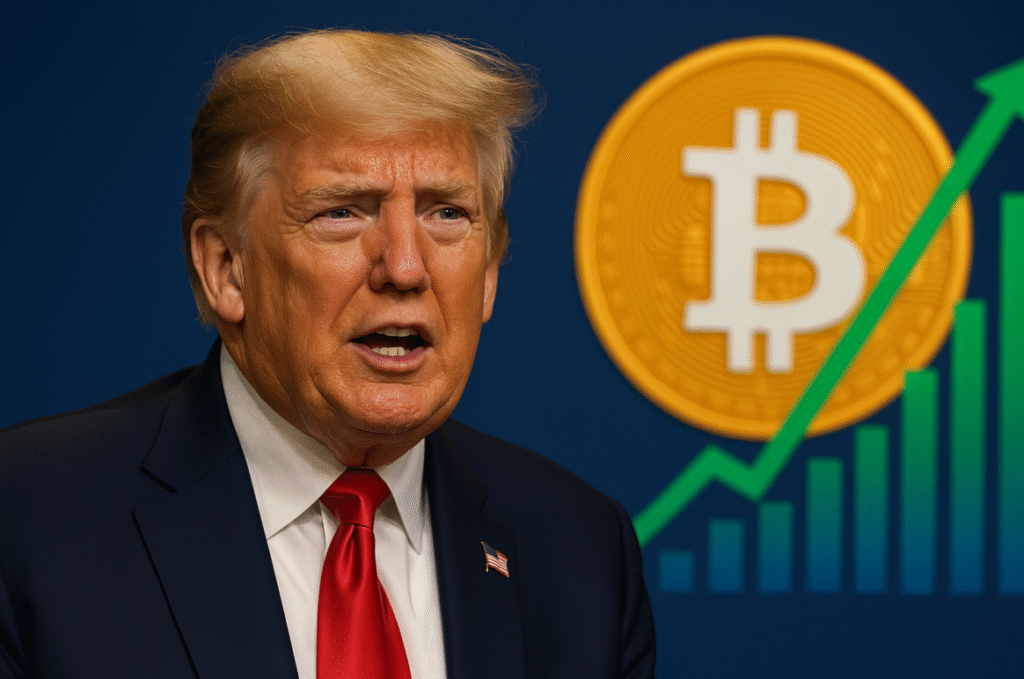Fundstrat Global Advisors has forecast a significant increase in Bitcoin’s valuation, predicting it could reach $250,000 by 2025, with a long-term price target of an impressive $3 million. This could be among the most ambitious projections in the bitcoin market to date. This forecast has impacted the financial sector, reigniting discussions about Bitcoin’s role in the global economy, its long-term sustainability as a store of value, and the implications of institutional acceptance. Bitcoin Eyes $250K. The most recent analysis from Fundstrat places Bitcoin not only as a hedge against inflation but also as a possible pillar of a future distributed financial infrastructure, as the digital asset recovers from past bear markets.
Forecast of Fundstrat and the Analyst behind it
Tom Lee, co-founder and head of research for Fundstrat, is behind their optimistic estimate. Former JPMorgan strategist Lee is well-known for making prescient calls on digital tools and stocks. Models of his team are based on institutional flow analysis, macroeconomic patterns, and supply-demand dynamics. Lee states that the current market dynamics involve a combination of restricted supply following the halving and increased demand from ETFs. Pakistan to Launch Strategic Initiative, and Greater Institutional Confidence Might Be the Forces Propelling Bitcoin Beyond Its Past All-Time Highs Toward Hitherto Unheard-Of Levels.
The halving of Bitcoin in April 2024 changed the block reward from 6.25 BTC to 3.125 BTC, therefore drastically decreasing the supply influx. Halving events historically has preceded significant bull runs; past halvings in 2012, 2016, and 2020 have resulted in rapid price rises. Fundstrat believes that this could be the most important cycle currently, driven by increased acceptance and improved macroeconomic conditions.
Driving the $250K Target in 2025: What Exactly?
Several elements, encompassing both technological and macroeconomic aspects, support the $250,000 estimate. Institutional demand is one main factor. Supported by BlackRock’s iShares Bitcoin Trust and Fidelity’s Wise Origin Bitcoin Fund, the debut and explosive expansion of spot Bitcoin ETFs in the United States has directed billions of dollars into the crypto ecosystem. Considered a necessary validation of Bitcoin as a legitimate asset class, this institutional flow significantly enhances its liquidity and stability.
Furthermore, macroeconomic headwinds, including prolonged inflation, geopolitical uncertainty, and growing mistrust in fiat currencies, are influencing many investors to investigate alternative sources of wealth. Often referred to as “digital gold,” Bitcoin has now taken the stage in that regard. To preserve their buying power, people are turning to Bitcoin and other cryptocurrencies, as central banks around the world, especially in high-inflation areas like Turkey and Argentina, are doing.
Fundstrat also makes a strong case based on supply constraints. Available liquidity is decreasing as fewer Bitcoins are created and more are being put into long-term ownership. Platforms like Glassnode’s on-chain analytics confirm a consistent rise in “HODLed” coins, which are bitcoins that have remained unchanged in wallets for long durations, thereby lowering sell-side pressure and improving price resilience.
Reason Fundstrat Believes $3M Is Possible
Although a $250,000 price tag may seem optimistic, Fundstrat’s long-term projection of $3 million per Bitcoin is even more startling. Their calculations suggest that this value depends on Bitcoin reaching either equal or greater monetary value than gold. Should Bitcoin capture even a portion of the market capitalisation of gold, valued at about $13 trillion, its price would skyrocket into the millions.

Lee’s thesis projects a more general institutional allocation during the following ten years. Currently, Bitcoin accounts for only a small portion of the world’s financial portfolios. Should big pension funds, sovereign wealth funds, and insurance firms dedicate even 1% of their holdings to Bitcoin, the demand-side shock could be too great. Add that with the set supply of 21 million Bitcoins, and the supply-demand mismatch becomes mathematically favourable for long-term price increase.
The emergence of Layer 2 scaling ideas, such as the Lightning Network and Taproot enhancements, fuels even more hope. These technical developments increase Bitcoin’s transaction speed and anonymity, therefore increasing its daily viability. When Bitcoin becomes a medium of exchange and surpasses its speculative asset value, its economic value could increase significantly.
Dealing with volatility and doubt
Although there is hope, it is essential to manage the volatility and risks associated with Bitcoin. Critics argue that Bitcoin still fluctuates too much to be a reliable source of value. Price swings of 10–20% in one day are not rare even with rising acceptance. Regulatory uncertainty also looms large, particularly in nations actively examining the broader cryptocurrency scene.
Proponents, such as Fundstrat, argue, however, that this volatility is not a flaw, but rather a characteristic of a developing asset class. Like in the early years of previous disruptive technologies, such as the internet, volatility is projected to drop as market capitalization rises and liquidity deepens.
Global Patterns and the Institution of Bitcoin
The global setting gives Fundstrat’s estimate layers of legitimacy. While nations like the United Arab Emirates and Switzerland are creating crypto-friendly laws, countries like El Salvador have embraced Bitcoin as legal currency. Aiming to standardize control and build confidence, even the European Union has advanced with its Markets in Crypto-Assets (MiCA) rules.
In the United States, the SEC’s ultimate approval of spot ETFs and the shifting stance of major banks such as JPMorgan, Goldman Sachs, and Morgan Stanley indicate a future where Bitcoin coexists with traditional finance. Through retirement accounts, Fidelity and Charles Schwab now provide Bitcoin exposure, therefore reinforcing its position in mainstream finance.
Future View: Should Fundstrat Be Right?
Should Bitcoin do reach $250,000 by 2025, the ramifications are significant. This would imply a radical change in investor sentiment, capital allocation strategies, and possibly central bank policies. Financial advisers will be required to recommend Bitcoin exposure per various strategies. Old asset managers would have to change their risk models to consider digital assets. Moreover, this boom would likely inspire greater interest in other cryptocurrencies and blockchain technology, thereby encouraging further innovation.
However, reaching a $3 million valuation suggests a significant paradigm shift. It would imply a day when Bitcoin has completely evolved into a global monetary foundation layer, perhaps challenging or perhaps supplanting current fiat-based systems. Think tanks, economic forums, and scholarly studies are increasingly examining the issues of decentralising wealth, democratising finance, and restructuring global power dynamics.


